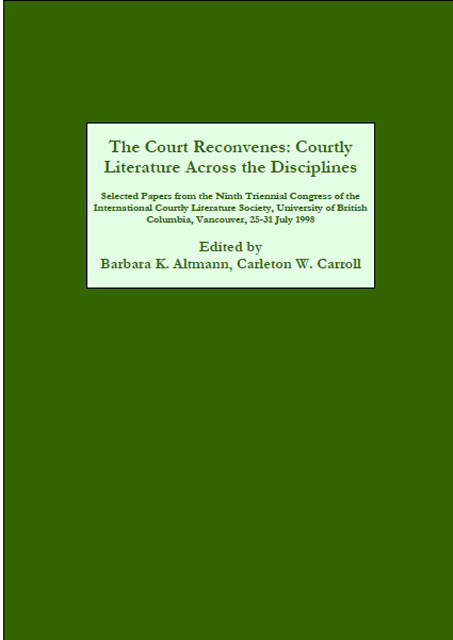 The Court Reconvenes
The Court Reconvenes Didactic Strategies in the Ritterspiegel of Johannes Rothe
Published online by Cambridge University Press: 31 March 2023
Summary
The title of my paper, “Didactic strategies in the Ritterspiegel (the knightly mirror),” may sound quite martial. “Strategies” and “knights” suggest strife and battle-noise, terms which contrast strangely with the person of Johannes Rothe, a small-town clerk in late medieval Germany. But “strategies” and “knights” are instrumental for the two crucial terms of the title: “didactics” and “mirror.”
Strategies are employed to make the knights look into the mirror, i.e., to read the book. What they are supposed to see in this mirror are knightly virtues – and their own lack of them. How does Rothe make them look at the mirror? How does he organise his poem to make it easy to remember and how does he argue to keep the supposed knights looking into the mirror? I want to explore three of these “didactic strategies”: the outward organisation by acrostics and numbering; the use of authorities to ensure an inner structure; and lastly, how the title of the work comes to life in the allegorisation of the mirror. This will also help to classify the use of didactic strategies in other works by Rothe.
Before analysing the text, I should like to give a brief outline of the textual tradition of the Ritterspiegel, since it is characteristic for Rothe's standing in late medieval literature. There is only one record of it (Library of Kassel, poetic manuscripts in quarto, volume 8), written in Eisenach in the middle of the fifteenth century, close to Rothe in terms of place and time. Although this manuscript probably does not represent a direct copy of the original manuscript, the careful layout seems to go back to Rothe himself. Every second verse is emphasised by a red initial and the first verse of the alternate rhymes is marked by a dot at the left outer line of the column. The second and fourth verses are indented at the inner margin of the column with smaller initials. Each chapter starts on a new page with a large initial.
The Ritterspiegel covers 80 pages of the manuscript. The last 70 pages are filled by another text of Rothe, the Eisenacher Rechtsbuch, a collection of local law traditions. This shows that there was a local interest in the author Rothe. His works were collected regardless of their original purpose.
- Type
- Chapter
- Information
- The Court ReconvenesCourtly Literature across the Disciplines: Selected Papers from the Ninth Triennial Congress of the International Courtly Literature Society, University of British Columbia, Vancouver, 25-31 July 1998, pp. 99 - 106Publisher: Boydell & BrewerPrint publication year: 2002


